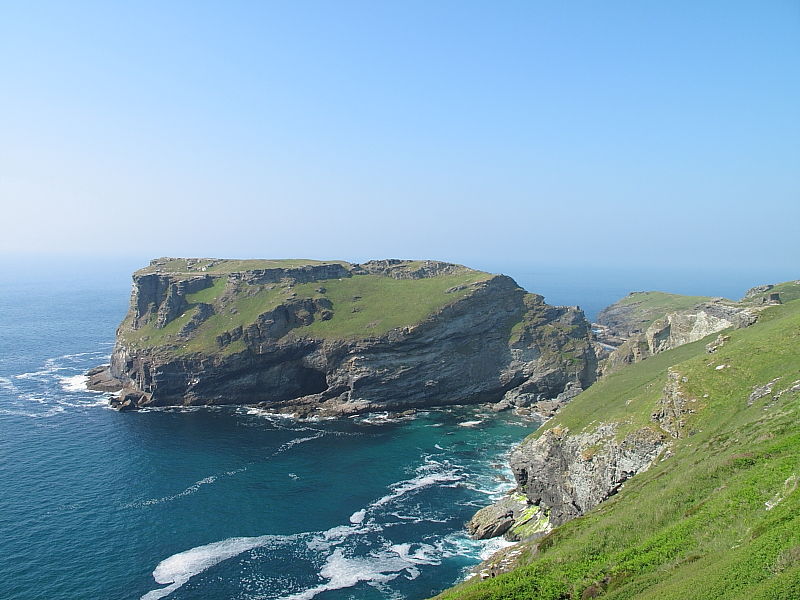 |  | | Nearest sites: Boscastle | Daymer Bay |
| Spotlight species | | | Autumn Squill, Chives and Golden-samphire are all nationally scarce. Autumn Squill (flowering July to September) carpet the grassy slopes and paths whilst Chives (June to July) can be found alongside the path, amongst the grasses and on the ledges of the cliffs. Golden-samphire (July to September) prefer the more exposed slopes and rock around Penhallic Point. Grayling (flying from July to September) is an uncommon butterfly. It prefers sites with sparse vegetation so look around bare areas of soil and sheltered rocky outcrops. Don’t expect to ever see this butterfly resting with its wings open as it always keeps them closed. Unless you see it land it can be incredibly difficult to spot as its cryptic underwing design blends perfectly with its surroundings. | | Wild flowers | | | Dyer’s Greenweed, Common Bird’s-foot-trefoil, Betony, Common Knapweed, Bell Heather and Wild Thyme attract many species of insects to their flowers. | | Birds | | | Common Whitethroat nest in the denser patches of Gorse and Bramble along with commoner species such as Dunnock and Robin. Along the spectacular cliffs Fulmar and Herring Gull nest . At times Cormorant, Shag and the occasional Guillemot fish close in to the rocks. Stonechat, Linnet, Raven, Rook, Jackdaw, Skylark and Kestrel may be seen anywhere along this stretch of the South West Coast Path. There is always a chance of catching sight of a Peregrine and Wheatear can often be seen particulary on their spring and autumn passage. | | Mammals | | Grey Seal can often be seen and Harbour Porpoise have been recorded leaping out of the water close to the headlands. | | Butterflies | | | Small Pearl-bordered Fritillary occur in good numbers whilst Common Blue, Small Heath, Gatekeeper and Meadow Brown are common in late spring and summer. Peacock, Large Skipper, Small Copper, Small Tortoiseshell, Comma, Green-veined White and Large White can be expected and, if lucky, you may catch sight of the fast-flying, ellusive Dark Green Fritillary. Migratory butterflies such as Red Admiral and Painted Lady are recorded every year in variable numbers and there is always a chance of seeing a Clouded Yellow. | | Day-flying moths | | | The migratory Silver Y and brilliantly coloured Five and Six-spot Burnet are the most common moths to be seen during the day. Yellow Belle and Antler Moth are worth looking out for. Also keep your eyes open for the amazing Hummingbird Hawk-moth as they hover at flowers and are regular visitors from the continent. If walking through patches of ungrazed grass a variety of different tiny Grass moths may be disturbed. | | Caterpillars | | | Burnet Moth caterpillars are the most common to be found and their cocoons are also easy to spot glued to the top of grass stems. Small Tortoiseshell and Peacock caterpillars may be found on nettles and in some years the caterpillars of the Painted Lady, a migrant butterfly, may be found on thistles. | | Other | | | A small spring-fed pool attracts insects such as the Broad-bodied Chaser, a dragonfly, and holds a population of tadpoles and froglets in the summer months. | | Site information | | - Location: Glebe Cliff is situated just south of Tintagel on the Atlantic coast of North Cornwall.
- GPS: 50.662656,-4.760342
- Parking: small, free car park by the church
- Facilities: none
- Walking: There is easy access to the South West Coast Path. Going north towards the town there are splendid views over The Island. Going south there are a number of paths to choose crossing the coastal heathland to Penhallic Point from where you can see Trebarwith Strand and Gull Rock.
|
| Advertise on this page?Click here to email Wildlife Insight. |